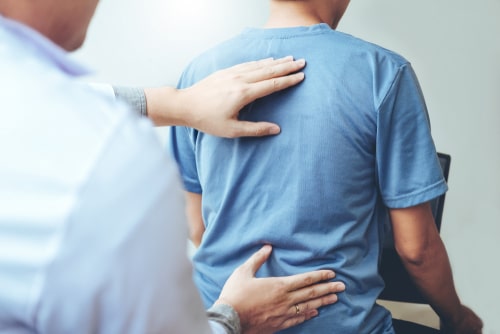
By Dr.Ravindra Patil
Before we understand back care, we must understand what are pressure sores or bedsores. Back care procedure is done to prevent pressure sores.
Pressure sores are also called pressure ulcers or decubitus ulcers or bedsores. They are injuries to the skin and underlying tissue resulting from prolonged pressure on the skin. Bedsores most often develop on skin that covers bony areas of the body, such as the heels, ankles, hips, tailbone and back of the head.
People who are at risk of bedsores have medical conditions that limit their ability to change positions. They are bed ridden or chair ridden. They are forced to spend their time in a bed or chair.
Bedsores can develop over hours or days. Most sores heal with treatment, but some never heal completely. We can take steps to help prevent bedsores and help them heal.
Warning signs of bedsores or pressure ulcers are:
Bedsores fall into one of several stages based on their depth, severity and other characteristics. The degree of skin and tissue damage ranges from changes in skin colour to a deep injury involving muscle and bone.
For people who need to stay in bed, bedsores may happen on:
Wheelchair bound people also may suffer pressure sores at pressure points.
If you notice warning signs of a bedsore, change your position to relieve the pressure on the area. If you don’t see improvement in 24 to 48 hours, contact your doctor. Seek immediate medical care if you show signs of infection, such as a fever, drainage from a sore, a sore that smells bad, changes in skin colour, warmth or swelling around a sore.
Bedsores are caused by pressure against the skin that limits blood flow to the skin. Limited movement can make skin vulnerable to damage and lead to development of bedsores.
Primary contributing factors for bedsores are:
Your risk of developing bedsores is higher if you have difficulty moving and can’t change position easily while seated or in bed. Risk factors include:
You can help prevent bedsores by frequently repositioning yourself to avoid stress on the skin. Other strategies include taking good care of your skin, maintaining good nutrition and fluid intake, quitting smoking, managing stress, and exercising daily.
Consider the following recommendations related to repositioning in a bed or chair:
In hospitals, an ‘air bed’ is given to patients who are immobile. Nursing care plays a vital role in preventing bedsores. Steps of back care in nursing are summarised below:
These five steps of back care are crucial.
Aim of back care is to:
Turn patient on his back and pull down the gown. These back massage steps in nursing should be regularly followed.
Effleurage (stroking—is a long sweeping movement with palm of hand conforming to the contour of the surface treated, over small surface (on the neck) the thumb and fingers are used. Strokes should be slow, rhythmical and gentle with pressure constant and in the direction of venous stream.
Kneading—performed with the ulnar side palm resting on the surface and the fingers and thumb grasping the skin and subcutaneous tissues which move with the hand of the operator.
Friction—is performed with the whole palmar surface of the hand or fingers and thumbs over limited areas. This movement is a circular and kneading with pressure against the underlying part of tissue which cannot be grasped.
Google is of such great help, just type ‘back care ppt’ and you will get many presentations explaining steps of back care.
Samarth Neuro and Superspeciality Hospital has 100+ beds & specializes in emergency surgery for neurological issues/disorders & diagnostics.
Samarth Neuro and Superspeciality Hospital